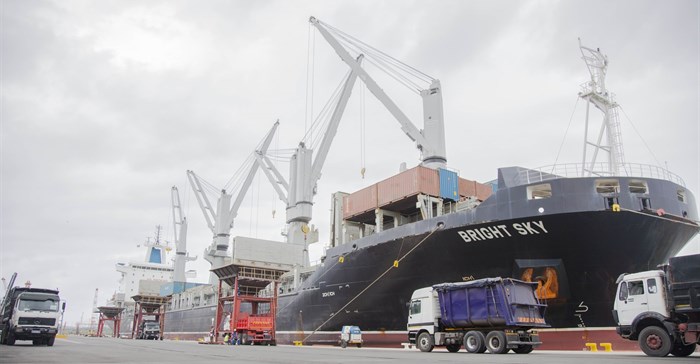
Related
Top stories



Transnet Group Capital (TGC) – which is executing this major project on behalf of TNPA – completed work on Berth 13 and 14 within the project’s timeframe. On Friday 13 January the Port of Durban serviced Bright Sky, the first vessel to use the common user berth 14 after reconstruction of both the berths and a handover to port’s operations. Both berth 13 and 14 are now fully operational.

Port of Durban Manager Moshe Motlohi said: “The handing over of these two berths marks a great milestone for one of the oldest ports in the country. It talks to safety improvements and revamping of infrastructure which will further enhance the attractiveness and competitiveness of our ports.”
The R1.5 billion project for reconstruction and deepening of six Maydon Wharf Berths 1-4, 13 and 14 was awarded to Stefanutti Stocks AXSYS Joint Venture in 2014.
It forms an integral part of Transnet’s Market Demand Strategy which aims to enable the effective, efficient and economic function of an integrated port system to promote economic growth.
Once completed the berths will have a draught of 14.5m enabling them to handle vessels with draughts up to 13m, making these berths the deepest berths in the Port of Durban. However, the Maydon Wharf access channel will still need to be deepened thereafter to enable deeper draught vessels to sail in fully laden.
Constructed more than 90 years ago, the Maydon Wharf Precinct is one of the oldest cargo terminals and is the largest breakbulk and dry bulk handling precinct in the Port of Durban covering 120 ha of port land. The precinct’s youngest berth is about 42 years old while its oldest berth is 92 years old.
The quay walls in the precinct were originally designed to handle vessels of approximately 20,000 DWT versus the 55,000 DWT vessels now calling the port.
Port of Durban Engineer, Malefetsane Setaka said: “The quay walls of the old berths had reached their lifespan and were becoming unsafe for the vessels to operate. This project has given new life and a safe environment for larger ships to berth.”
The project scope involved demolition of paving, rail track work and services, construction of new steel sheet piled quay walls, demolition of existing piled crane beams, extraction of timber, concrete piles and a limited number of steel sheet piles and removal of the existing quay walls and capping beams.
Despite the reconstruction being identified as a brownfield project, the team had a challenge in obtaining initial engineering drawings for the berths.
“One of the biggest challenges was to understand and retrieve the initial engineering recording of these berths. This meant that the team had to spend more time in designing and reconstruction of the quay walls,” added Setaka.
The newly constructed quay walls will now have a lifespan of about 50 years.

The completion of Berths 13 and 14 comes a few months after the handover of Berth 1 and 2 to port operations in July 2016. This brings the number of completed berths to four out of the six berths included in the project scope.
“Our customers are the key beneficiaries of this project. They will now operate in safer and much deeper berths. We are also pleased that the project timelines committed to were adhered to by the project team,” added Motlohi.
The completion of the four berths, 1, 2, 13 and 14 within schedule has generated positive feedback from TNPA customers who have been kept abreast of all the progress throughout the project. TNPA customers were kept informed via a weekly communique.
The project has created a total of 127 jobs including general workers, semi-skilled workers, safety officers, and storeman as well as project managers. On skills development programme, 206 people were trained and attained various skills in lifting and rigging, construction, project management as well as safety officers.
Its supplier development programme was 7% above target and to the total value of R273 million of the overall cost of the project. About R116 million of the R273 million was spent on national and regional suppliers who provided concrete, foam work, dredging and scouring services. An amount of R83 million was spent on Small Business Development with service ranging from travel, steel suppliers, reinforcing, electrical work and earthworks and plant hire.
The project to reconstruct and repair all six berths is expected to be completed by 2018.